Naples & Pompeii
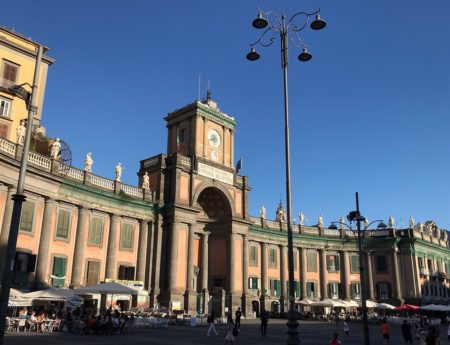
My first stop in Italy was Naples, and my introduction to traveling solo in Europe. After spending time with world travelers Dave & Arwen in Greece, I felt I was as ready to take on the world – one continent at a time. My Italian itinerary was very ambitious, and in retrospect it would have been nice to have more leisure time. Three cities in eight days was exhausting, but I wanted to travel to as many places as possible – still absorbing all the amazing art and marvelous experiences.
I arrived in Naples by plane, then took a bus to my lodging, following my hosts instructions which were a bit confusing. One of my best tools was the iPhone app – Maps.Me (similar to GoogleMaps) but worked better offline for me. I use it all the time in The Gambia, and it is very accurate especially when walking. Dragging my rolling suitcase up the cobblestone streets was a challenge, but I’m not too proud to ask the locals for directions when I’m lost. My room was in an old home, that looked shabby on the outside, but was very updated and comfortable inside.
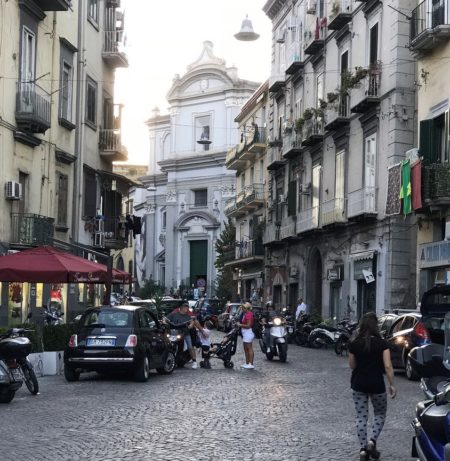
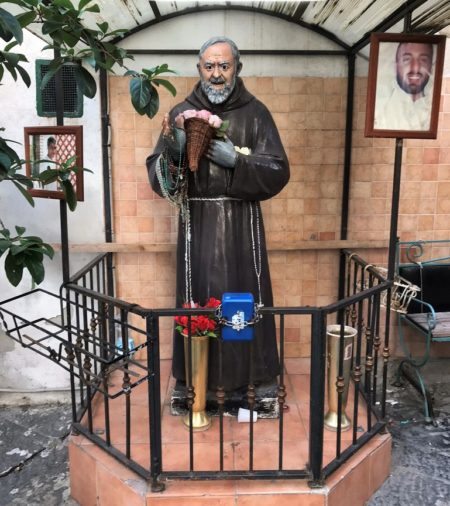
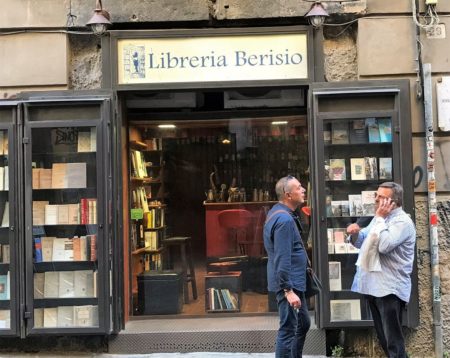
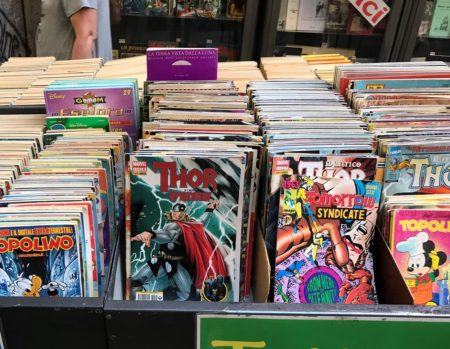
I only had two nights in Naples, so the first afternoon I walked around using the Rick Steves “Naples City Walk” audio tour, and visited the Naples Archaeological Museum, also listening to his audio tour. I found Naples very chaotic – life is definitely live in the streets – which are very narrow and maze like. I noticed several themes as I explored – neighborhood churches at every turn, small shrines to to the dearly departed outside many homes, and lots of bookstores. I loved seeing books for sale everywhere, since Gambians don’t read for pleasure. On the booksellers streets, there were tables of books outside, and the bins of Italian language comic books reminded me of my kids childhood collections.

I finished day one in Naples with a simple basil and cheese pizza – Naples is renowned for their pizza. I am not a big fan of pizza, but it was definitely one of the best pizzas I’ve eaten.
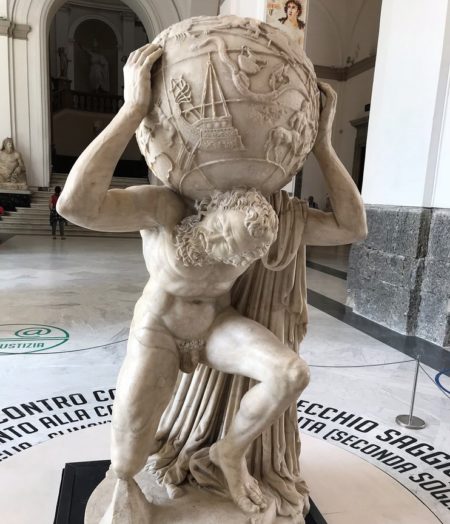
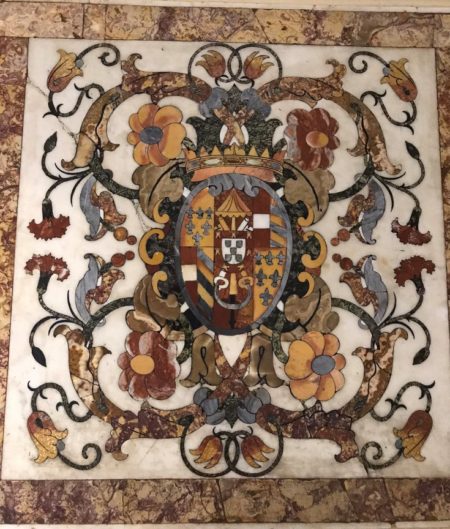
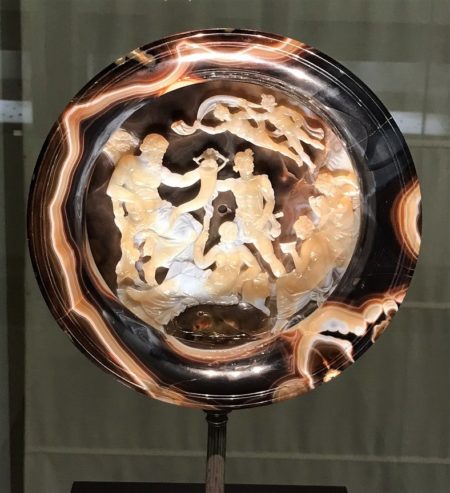
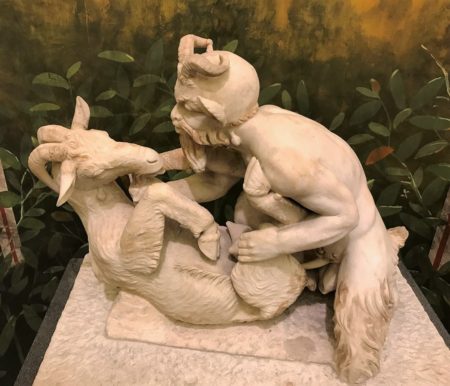
The Naples Archaeological Museum was well laid out and a good introduction to the history of the area, and what I would be seeing in Pompeii the next day. A lot of artwork from archaeological sites is now preserved in museums, and I found visiting the museum prior to visiting the ruins was very informative. It was fun to visit the “Secret Room” displaying many of the erotic fresco and statues found in Pompeii. The preservation skills it must take to remove all the ancient art from their original sites and then display it in museums is impressive.
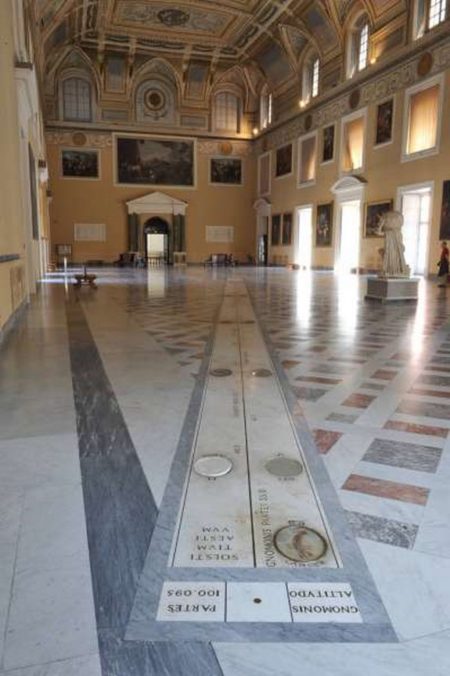
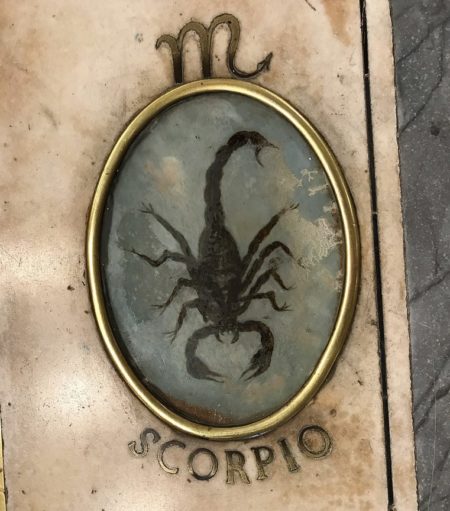
The Hall of the Sundial was the grandest room in the museum and possesses one of the greatest painted ceilings in all of Europe. The room was intended to house an observatory, with the sundial embedded in the floor, but the observatory project was abandoned. There is a certain time of the day when the sun comes through a window and illuminates the sundial – just not while I was there. This was one of my favorite rooms at the museum, it wasn’t very crowded and I was able to take in the grandeur of it all.
POMPEII
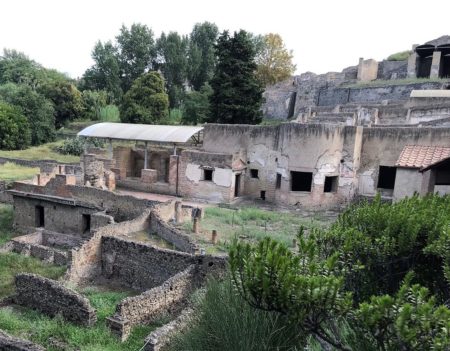
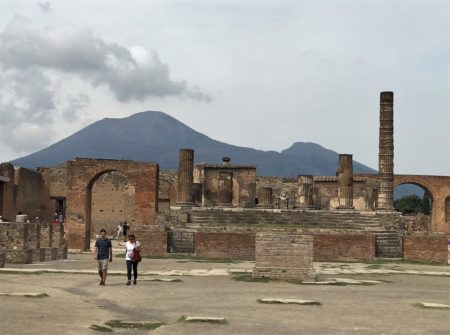
On day two in Naples, I took the train early in the morning to Pompeii and spent all day there. I had planned to visit the Herculaneum also, but Pompeii was too extensive and fascinating. I will have to return some day to see more of this area. Pompeii was a thriving and sophisticated Roman city, when it was buried under meters of ash and pumice, by the catastrophic eruption of Mount Vesuvius in 79 AD. Once again, the Rick Steves audio tour was perfect, explaining the history, organizing the tour, and describing what I was viewing.
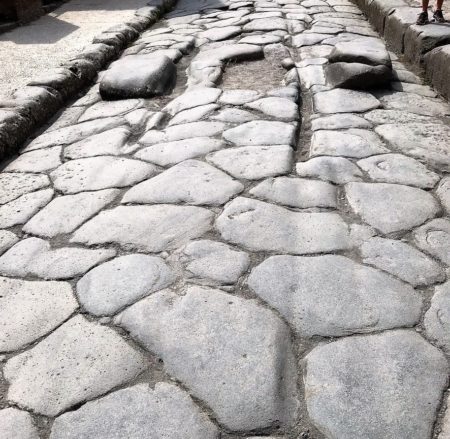
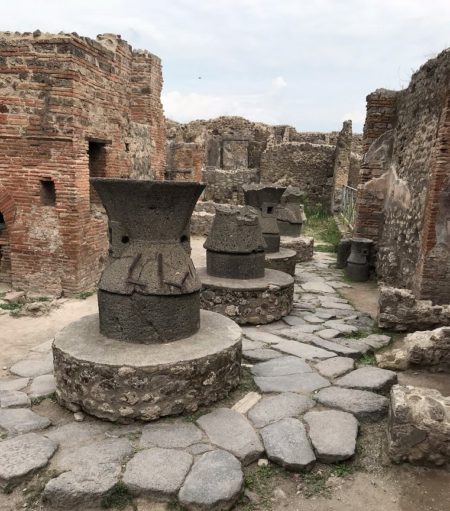
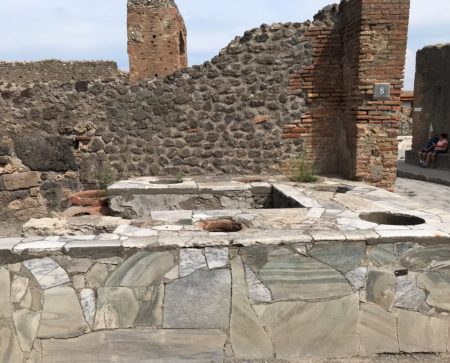
I learned that the streets were designed to accommodate the chariot carts, which all had standardized wheel bases. The stones in the streets were for navigation, and also to keep your feet dry when crossing flooded streets. Viewing the ruts made by ancient chariots and all the other items used in daily life was awesome. The ash that preserved the city makes it possible to get a sense of what life was like during those times. The granary looks like it could still function, and the food court just needed some pots set in the holes in the marble counters and fires built underneath. Evidently, people ate most of their meals out and fast food stalls were conveniently located near the markets, forums and baths.
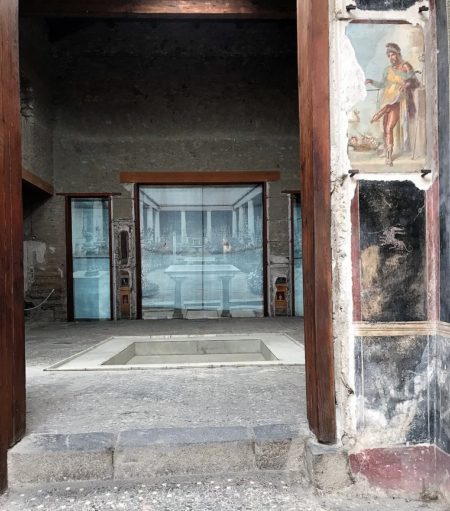
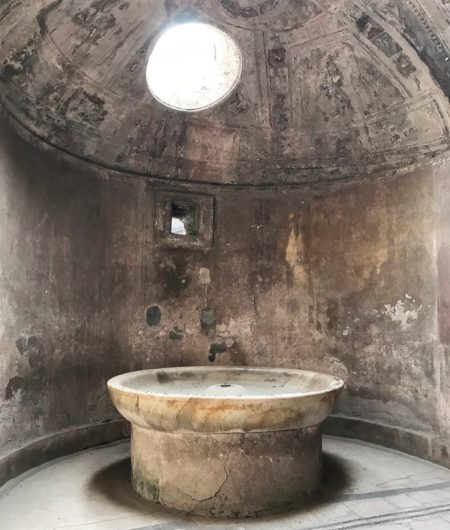
Pompeii had a wide variety of homes, some for the wealthy alongside the working class residents. Fresco painting on the walls and ceiling, and mosaics on the floors and walls were everywhere. It was nice that some of these items were still at Pompeii, so you can see how they were displayed.
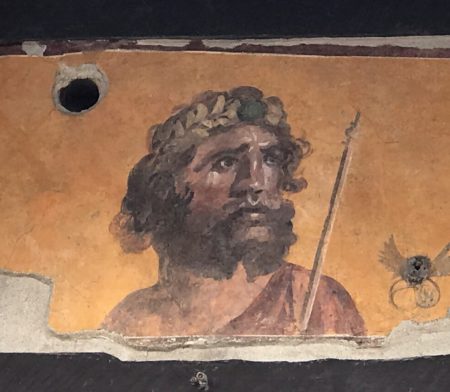
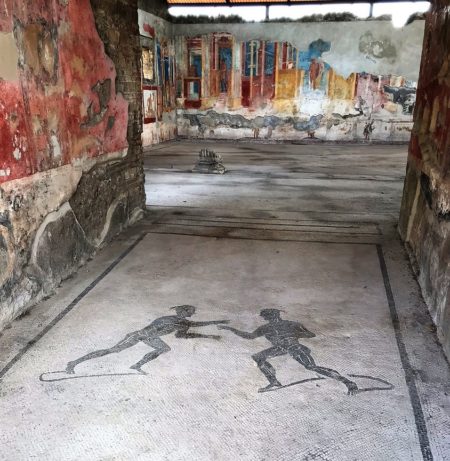
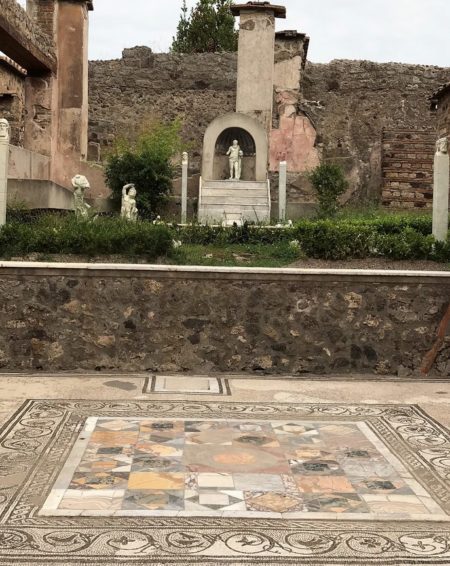
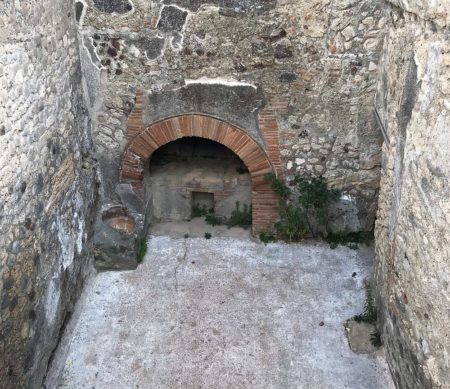
My last stop in Pompeii was the well preserved amphitheater. It is an elliptical structure situated in a depression in the ground and backing onto embankments. There are steps, divided into sections, which cover the entire perimeter of the construction. The seats in the lower central area were reserved for dignitaries, while those high up were for the common people. It is estimated to hold 12,000 to 20,000 spectators. It hosted all the circus shows and the gladiator games that were popular with the Pompeians. Construction dates back to 80 BCE, and is one of the oldest buildings in existence, and the access steps are outside the building.
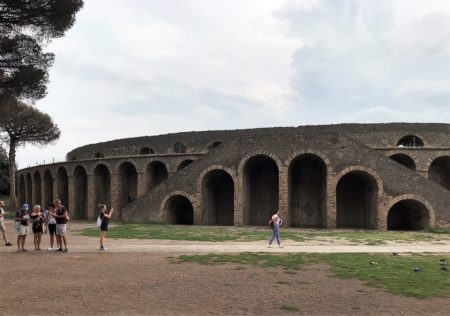
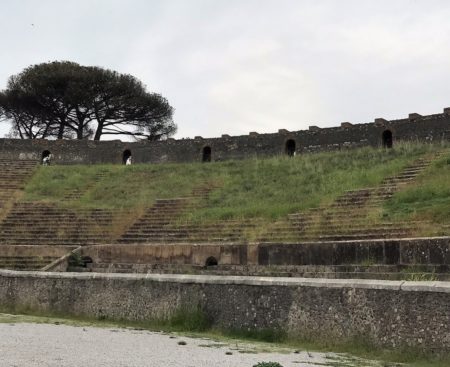
I could have spent many more hours at Pompeii, but by 4pm I was exhausted and needed to catch the train back to Naples. This was the only time I got on a train going in the wrong direction, but it was easy to get off at the next stop and wait for the correct train.
Dinner was sausage pizza (it was hard to find anything but pizza in Naples, unless you wanted a full course meal), before walking up the steep cobblestone street to my room for the night. My feet were tired, so it was early to bed, because I was catching an early morning train to Florence. Stay tuned for part two of my Italian adventure.
2 thoughts on “Naples & Pompeii”
Great pictures and commentary! Where would you be without Rick Steves? He lives just a few miles away from us.
Susan, Your photos are fantastic, and you saw more in two days than we did in three! We didn’t know about Rick Steves’ travel audios when we were there, but now we have his DVDs and watch them whenever we get homesick for Italy (and other Mediterranean countries). We’re just in awe of your energy. Love, Donna and Rob
Comments are closed.